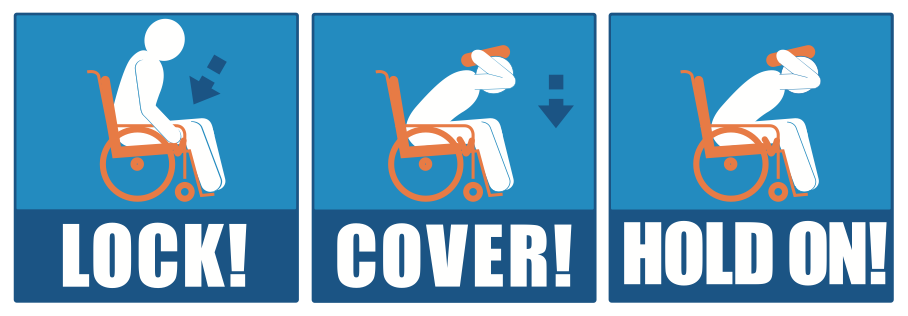Santa Monica College has been part of the Earthquake Early Warning (EEW) System since June 12, 2019.
What is the Earthquake Early Warning System?
The EEW System uses science and technology to provide an alert before strong shaking starts. A network of seismic stations allows rapid detection of earthquakes and assessment of shaking hazard to provide notification prior to shaking. Depending on your location and how big the earthquake is, warning times range from a few seconds to a few minutes. The further you are away from the epicenter, the more warning time.
Notification is based on the intensity of shaking expected to be felt at Santa Monica College. We have established a low-intensity level of ground shaking to trigger the alert system. By alerting for low levels of ground shaking we are likely to receive more notice for larger earthquakes. The warning system will broadcast an audible alert throughout the College.
Recognizing Notifications
Alerts from the EEW System will be broadcast over the college's emergency notification system. The alert will have a distinctive alert squelch and audible "earthquake" announcement.
Not every alert will require an evacuation. Await additional notifications for whether an evacuation is required.
Actions to Take During an Alert
When you hear an alert, it is important that you take actions to protect yourself.
-
DO NOT RUN or attempt to exit buildings. Find a safe place near you and take cover.
-
Find a safe location where items cannot fall on you and Drop/Cover/Hold.
-
DROP: Drop to the ground and seek cover. DO NOT RUN!
-
COVER: Seek cover under a desk or sturdy object. If you are not near a desk, take cover near an interior wall or away from objects that can fall. Cover your head with your arms.
-
HOLD: Stay where you are until shaking stops.
-
Take cover away from building exteriors, windows, glass, shelving, or items that may fall over or break and fall on you.
-
If you are driving, pull over and stop. Avoid stopping on bridges or under overpasses.

Frequently Asked Questions
Are there limitations to the EEW System?
Yes. There is a "blind zone" around your location. If the earthquake is centered in this area, you would not receive advanced warning.
Will I receive alerts for every earthquake?
The facility has established a baseline for alerts so, you may not receive alerts for smaller earthquakes even if there is light shaking. Most earthquakes with noticeable shaking will be broadcast unless in the "blind zone."
How does the Earthquake Early Warning System Work?
The illustration below provides a brief overview on how EEW works. The alert is then
delivered to the College via a localized interface.

Illustration Description: Earthquake early warning systems work because the warning message can be transmitted almost instantaneously, whereas the shaking waves from the earthquake travel through the shallow layers of the Earth at speeds of one to a few kilometers per second (0.5 to 3 miles per second). This diagram shows how such a system would operate.
When an earthquake occurs, both compressional (P) waves and transverse (S) waves radiate outward from the epicenter. The P wave, which travels fastest, trips sensors placed in the landscape, causing alert signals to be sent ahead, giving people and automated electronic systems some time (seconds to minutes) to take precautionary actions before damage can begin with the arrival of the slower but stronger S waves and later-arriving surface waves.
Computers and mobile phones receiving the alert message calculate the expected arrival time and intensity of shaking at your location.
USGS image created by Erin Burkett (USGS) and Jeff Goertzen (Orange County Register).


